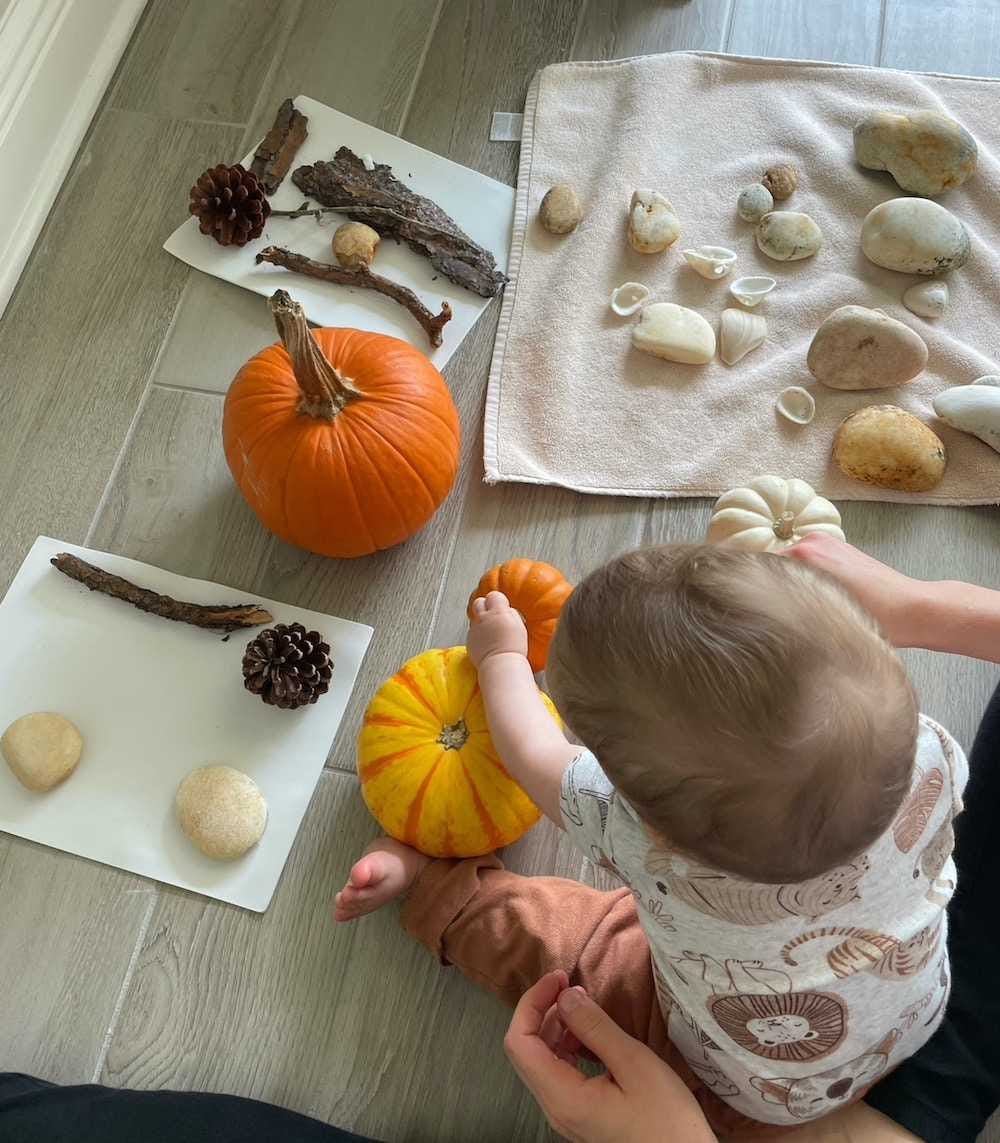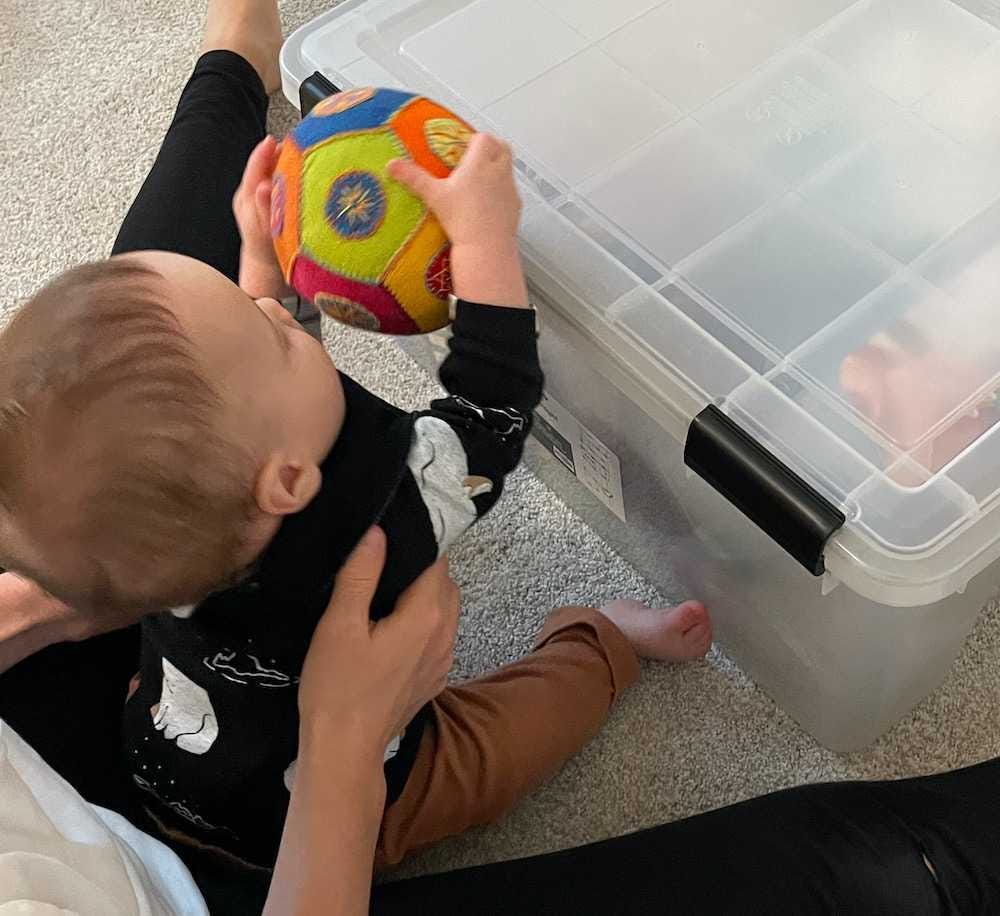The Best Toys for Babies Aren't Toys
Edition 2: Keep it simple. Keep it real. And let creativity thrive.
The best toys for babies aren’t toys. They’re real world objects and things from nature.
Laundry baskets and kitchen supplies, like a spatula, measuring cups, or a whisk, are some of Hayden’s favorites. He’ll sit for 15 to 20 minutes -- decades in baby time -- exploring pots and pans, for example.
Hayden is equally fascinated by rocks, shells, and pine cones, among other things from nature.
Once again, he’ll sit for periods of time exploring: running his fingers along the ridges of a shell; inspecting the stem of a pumpkin; touching a prickly pine cone. He’s also picking up some useful skills, like stacking.
This morning he picked up a Jack Be Little pumpkin and stacked it on top of a bigger pumpkin without a stem. He proceeded to knock down the stack. Then, he worked on stacking them up again.
Real world objects and things from nature are simple. They’re the best way to let creativity thrive because you can iterate on them in so many ways. After I saw Hayden stack the pumpkins, I offered him a rock to stack on the stemless pumpkin.
Hayden does have toys. But -- and this is the important point -- I aim to purchase simple toys. That’s because simple toys are versatile. They, too, allow creativity to thrive.
A patchwork ball is one of Hayden’s favorite toys. It’s so simple. But the options are endless.
He first used it while learning to sit; he’d lean forward, grab the ball with both hands, and lift it up. Later, he learned how to roll the ball and chase after it. More recently, he loves it when I make a tower out of boxes and place the ball on top; his job is to knock down the tower and retrieve the ball.
He also enjoys grabbing the ball with both hands, placing it on top of a plastic container, pulling himself up to the standing position, and then knocking the ball down. This process repeats over and over again. And, of course, there’s the “find the ball” game, where I hide the ball under a blanket and he finds it.
What’s in store for this ball is anyone’s guess. Hayden will probably think of something else fun to do with it as he gets older.
And so it goes with other toys -- when they’re simple. Complex toys, on the other hand, usually have a single use value or purpose. Creativity is constrained.
When thinking about toys for baby, think real world first. Not only is it economical. But baby may prefer real world objects. Hayden seems to. And it’s no surprise why: the sky’s the limit.
Keep it simple. Keep it real. And let creativity thrive.
“One thing I had learned from watching chimpanzees with their infants is that having a child should be fun.”
-Jane Goodall





